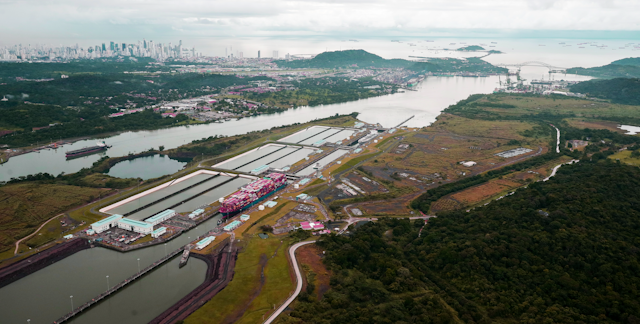What does a drought in Central America have to do with Australia’s cost of living? Quite a lot, if the drought affects the Panama Canal.
The 425 square kilometre Gatun Lake was built in the early 1900s to store water for the Panama Canal. Water is needed to float ships so they can navigate the canal. Now drought has severely affected the lake’s water levels.
Because of this the Panama Canal Authority has had to cut the number of ships using it. Hundreds of ships have queued up to wait their turn.
In June, Newsweek magazine drew attention to a Canal Authority graph showing the water levels in the lake dropping to unprecedented lows.
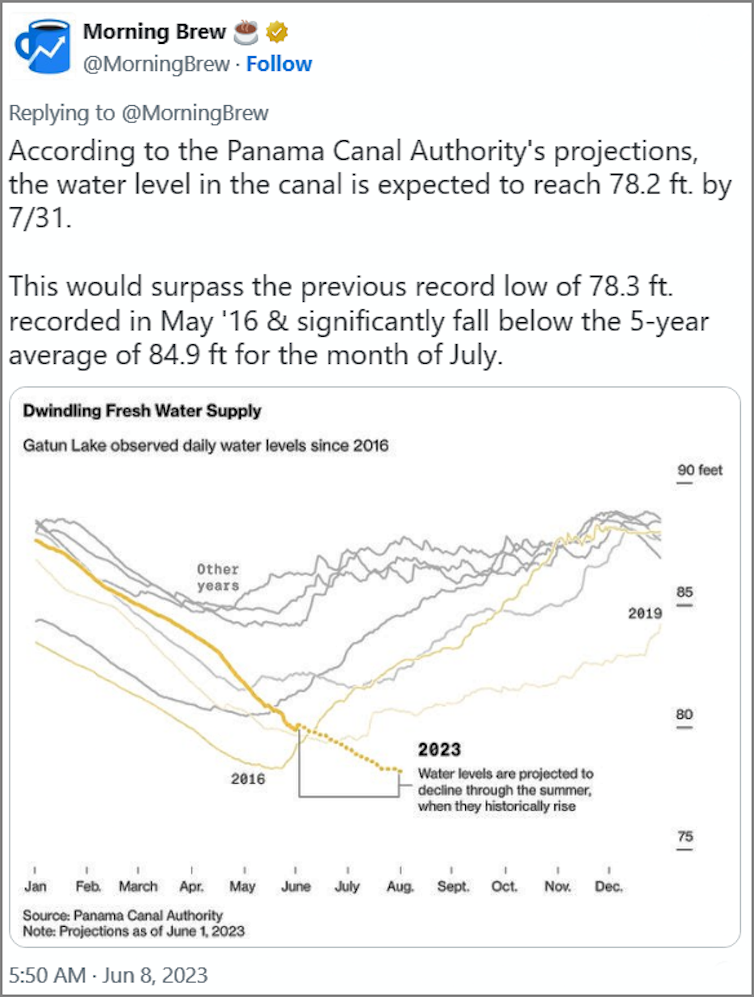
Water levels are now rising – but slowly. The Panama Control Authority says it will maintain restrictions on the passage of ships for a year.
The impact of delays
Delays mean higher costs. These in turn flow on to prices charged by wholesalers and retailers. We see it in the prices we now pay for the goods we buy.
Supply chain disruptions are only one of the many reasons why the cost of living is going up. The Panama Canal problem is not even the most severe disruption at present. That dubious honour goes to the Russian invasion of Ukraine.
Read more: From field to store to plate, farmers are worried about climate change
It is worth noting droughts and similar events are becoming more frequent due to global heating. Severe disruptions are moving from unusual to commonplace.
The Panama Canal Authority says of the drought that its “current severity and its recurrence has no historical precedence”.
Unprecedented, but not unexpected. Climate scientists, the United Nations, the Intergovernmental Panel on Climate Change and others have been warning for years about extreme weather events due to global heating.
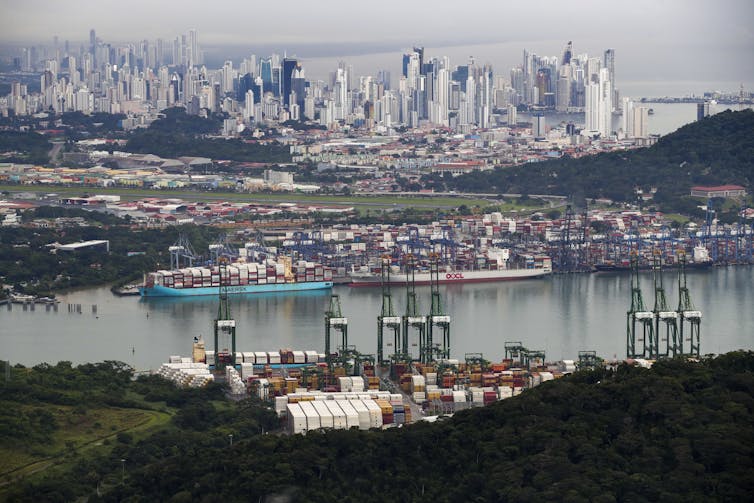
My own report last year on food supply chains warned about the impact of global warming and the likelihood that disruptions in supply chains would lead to increased food prices.
What has the Panama Canal got to do with Australia?
You may wonder how something as far away as the Panama Canal can affect Australian retail costs. A good question. The answer is that today’s supply chains are global and interconnected.
A 2021 study by the Productivity Commission on supply chains noted they are complex. It said
modern supply chains often rely on inputs from across the globe and can consist of thousands of firms. The Dell supply chain, for example, was estimated to consist of over 7,000 suppliers in 2019.
Yes Panama, at 1,000 kilometres north of the equator, is in the northern hemisphere. For trading, it is more important to America and northern Asia.
But Australia will still be affected by the disruption. Our supply chains are connected. Ripple spread through supply chains through prices. Even if products we buy or sell are not physically in the affected part of a supply chain, when their prices increase ours do too.
That is because buyers and sellers can shift goods depending on market conditions. Buyers move things to where the prices are cheaper, sellers to where the prices are higher. If a firm sells in one market, that affects a seller in the next market.
Shortages are reflected in prices
Each firm’s shortages or surpluses have an impact on prices. They in turn trade with other markets in different regions. Knock on effects spread across the globe.
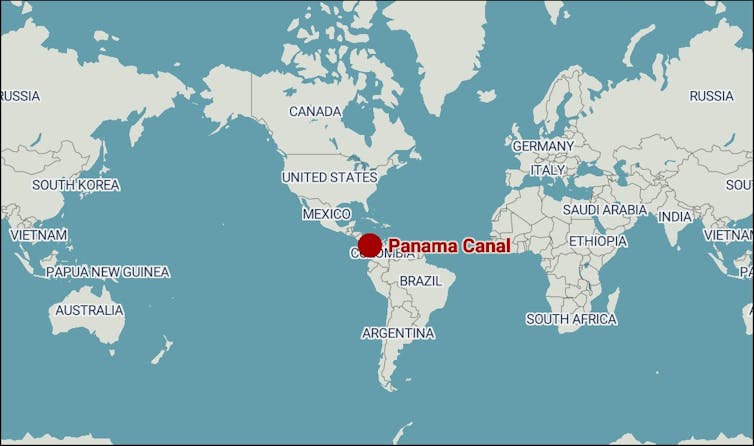
Australia is an island, highly reliant on shipping for trade – both imports and exports. Imports include not only finished goods but also many of the inputs to our industries, including packaging and parts.
Let’s consider how delays at the Panama Canal affect these. If a spare part for a manufacturer in the US or Japan is delayed by the shipping queue, the buyer will go to another supplier to avoid holding up their production line. Generally, this means paying a higher price.
If those suppliers sell to Australia, we end up paying higher prices too.
Sometimes the costs of a disruption filter into markets slowly, especially for items that are not traded very often and have few substitutes.
Sometimes it is fast for the opposite reason. Eventually though the costs of delays catch up to everyone in both the direct and flow on supply chains.
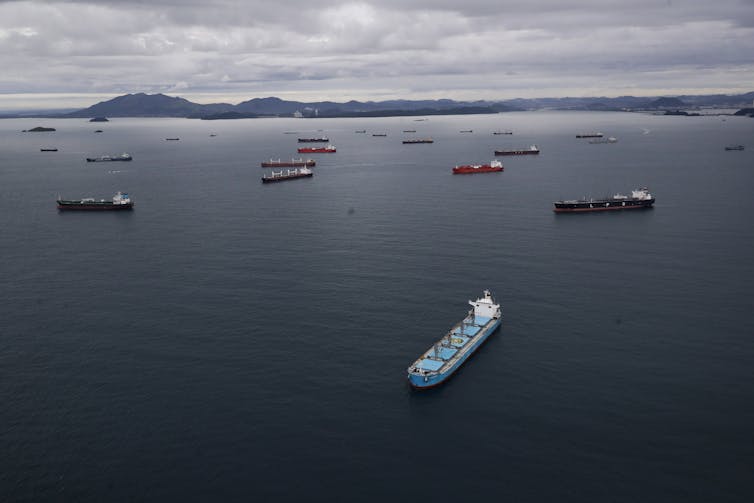
Given extreme weather is becoming more common, and affecting our cost of living, what should be our response?
A proposed course of action
Most important of course is to reduce our contribution to global heating. If governments do not meet their targets for emissions reduction the problems and costs will multiply.
However, temperatures have already risen. Extreme weather is becoming more common. Strategies for dealing with the unavoidable impacts on supply chains include diversifying.
This would mean having more suppliers, all using different chains, so that if one fails, we have other options.
Shortening chains by using more local suppliers where possible, would also help, as would embracing the joy of substitution – if one product becomes more expensive or unavailable, often there is another just as good.
And finally, take note of lessons from events far away.

